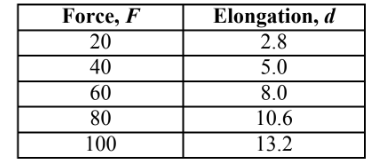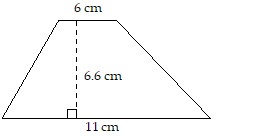Find the equation of the line that seems to best fit the data. Use the model to estimate the elongation of the spring when a force of 30 kilograms is applied. Round your answer to one decimal place.
Hooke’s Law states that the force F required to compress or stretch a spring
(within its elastic limits) is proportional to the distance d that the spring is compressed or
stretched from its original length. That is, where k is the measure of the stiffness of
the spring and is called the spring constant. The table below shows the elongation d in
centimeters of a spring when a force of F kilograms is applied.

A) 6.0 centimeters
B) 4.0 centimeters
C) 8.0 centimeters
D) 3.0 centimeters
E) 2.0 centimeters
B) 4.0 centimeters
You might also like to view...
Find the future value of the given annuity. Round to the nearest cent.$100 invested annually for 14 years at 2% interest compounded annually
A. $646.80 B. $1597.39 C. $6597.39 D. $1468.03
Use formulas to find the area of the plane region.
A. 112.2 cm2 B. 39.6 cm2 C. 56.1 cm2 D. 72.6 cm2
Suppose ? is an angle in standard position. Given either a point on the terminal side of ? or an equation of the terminal side of ?, give the exact value of the indicated trigonometric function(s). (15, 20); find sin ?.
A. 
B. 
C. 
D. 
Solve the problem.A prescription for a 20-kilogram child reads "PharmCor1000, 400 milligrams (mg), 2 times daily. Determine the volume of medication that should be given for one dose. If the prescribed dosage is not safe, reply "Not safe" and do not calculate the volume of medication. 
A. 5 mL B. 2 mL C. 10 mL D. Not safe